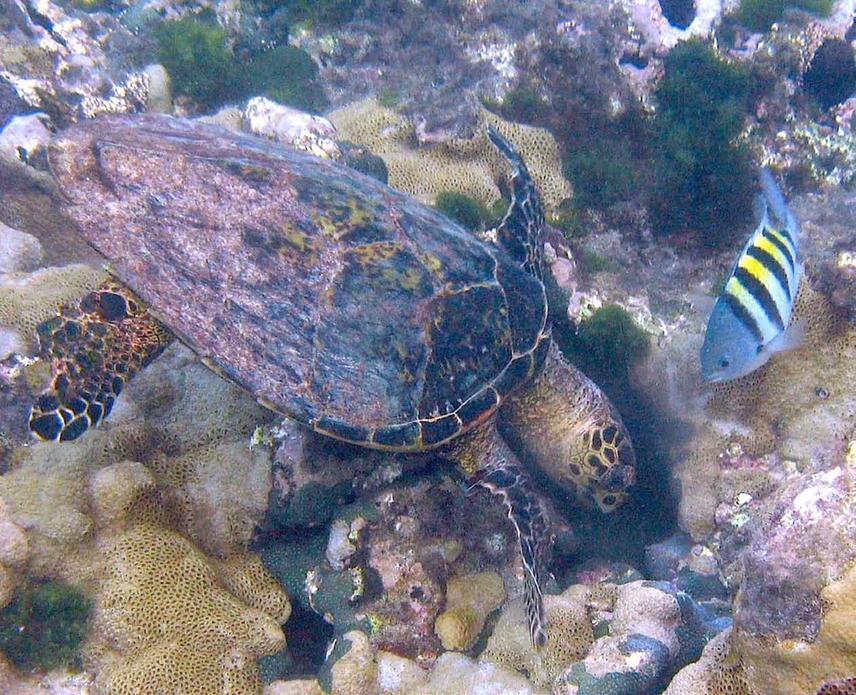Article featuring the project.
Maíra Proietti
Other projects
11 Nov 2010
Genetic Diversity and Structure, Mixed Stock Analysis and Migratory Patterns of Hawksbill Turtles Feeding around Northeast Brazil
In Brazil, hawksbill and loggerhead sea turtle breeding groups present exceptionally high hybridisation rates, which is concerning due to the possibility of sterility and lower fitness/survival of hybrids. This project aims to better understand the occurrence, distribution, parental species and generations of hawksbill x loggerhead hybrid offspring, through analyses of mitochondrial and nuclear DNA markers of immature animals sampled along the Brazilian coast.

Interspecific hybridisation occurs naturally or due to anthropogenic actions, and can lead to lower fitness, fertility, and even genetic extinction of species. In Brazil, the largest hawksbill and loggerhead breeding groups overlap temporally and spatially along the coast of Bahia, and studies have shown that approximately 42% of nesting females with hawksbill morphology were actually hybrids, presenting typical loggerhead mitochondrial DNA (mtDNA). Hybrid females produce hatchlings, but the dispersal and recruitment of this offspring is poorly understood, and immature hybrids resulting from these females had not been observed until recently.
This year, we reported the findings of our previous RSG project, including the occurrence of four immature hybrids at two locations at the Brazilian coast, which was a major step towards a better understanding of this phenomenon. Immature hybrids were observed at areas uncommon for hawksbills, and were absent at feeding grounds of this species; interestingly, they were encountered at regions with frequent occurrence of loggerheads. We suggested that hybrids, while morphologically similar to hawksbills, could be adopting loggerhead behaviour. However, we only analysed one genetic marker (maternally inherited mtDNA) and much remained to be understood about the issue, which led us to our current project. Here, we will use multiple markers to further investigate the distribution and extent of this process, and examine parental species and generations of hawksbill x loggerhead hybrid offspring, through a combination of mtDNA and nDNA analyses of immature animals sampled along the Brazilian coast.
The subject of this proposal has been included as one of the research priorities in the National Action Plan for the Conservation of Sea Turtles by the Brazilian federal agency responsible for biodiversity conservation and protected areas (ICMBio). The outcomes of this work will contribute towards a better understanding of this high-priority issue, providing insight on how the ecology and survival of sea turtles are affected by hybridization, and consequently guide management and conservation strategies of these animals in Brazil.